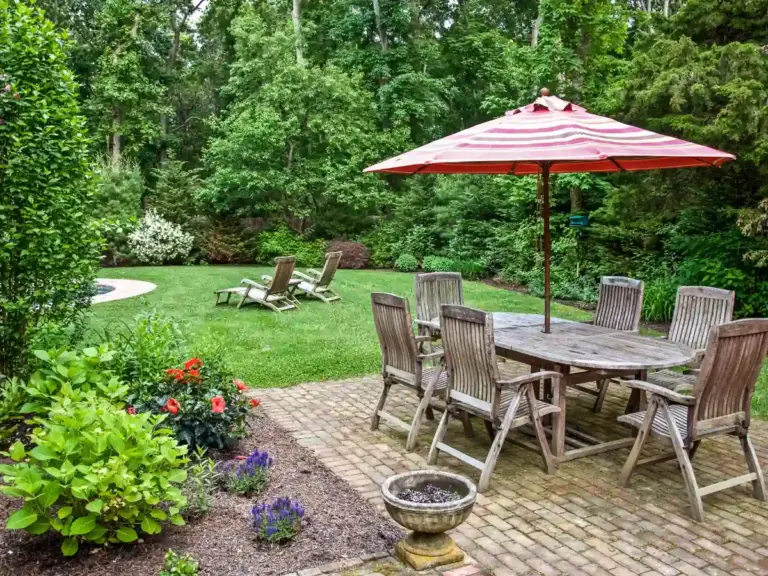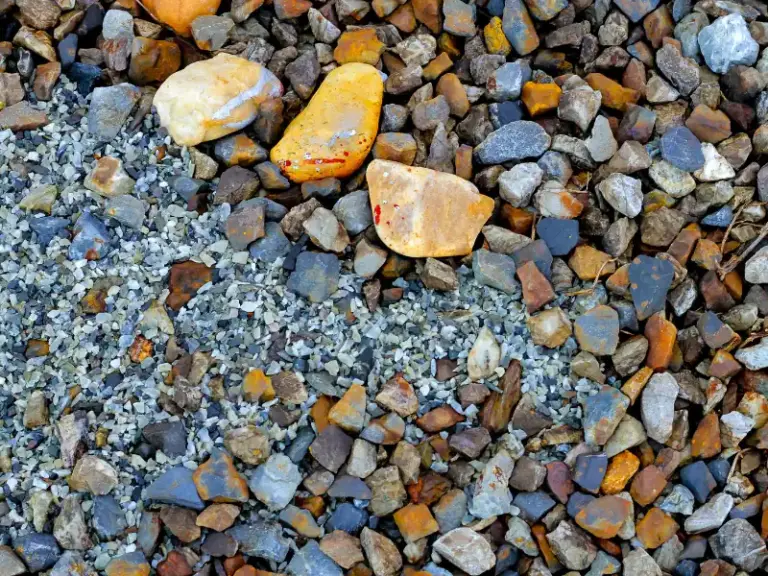Pavers Vs. Concrete; Pros, and Cons (Which is Better)
Pavers and concrete are excellent materials used for building driveways, walkways, patios, or porches. Whether you want to make a new structure on your outdoor space or upgrade, deciding what material to use may be challenging, especially if you don’t know its features, pros, and cons.
Pavers are durable, appealing, DIY friendly, and last long up to 50 years although the high initial cost of installation. On the other hand, concrete is easy to install, less costly compared to pavers but, slippery, less durable 3-5 years, and prone to damages as well as less appealing.
We’ll explore pavers and concrete to know the best fit for building a patio in an outdoor living space.
Pavers Vs. Concrete Patio
Pavers are stones made of clay, concrete, or natural stones, while concrete is a mixture of sand, gravel, and cement. There are differences between these two materials in terms of appearance, durability, care, and maintenance.
| Pavers | Concrete |
| Are more visually appealing. | Are less visually appealing. |
| Difficult to install. | Easy to install. |
| Last 30-50 years. | Last 3-5 years. |
| They are non-skid and safe to walk on. | It’s slippery and unsafe to walk on when wet. |
| Cheap and easy to repair. | They are difficult and expensive to repair. |
| Have high monetary value and ROI. | Have low monetary value and ROI. |
| They have a high upfront cost but low maintenance cost. | It has a low upfront cost but high maintenance. |
| Are resistant to often damages. | Are prone to damages. |
Let’s look at these differences in detail to avoid confusion when shopping for building material for your patio area.
1. Aesthetic value
Pavers are more visually appealing, while concrete (except stamped concrete) is less appealing.
Pavers come in different sizes, designs, colors, and shapes and are more versatile to complement your house’s and outdoor space aesthetic. This feature makes homeowners prefer them for elegance and ambiance.
On the other hand, a concrete slab isn’t stylish (except the stamped concrete); you may not have that sightly look in your patio area or home.
2. Ease of installation
Pavers are difficult to install, while concrete is easy to install.
To install pavers, you need proper prior planning. Then the process continues to excavation, grading, subspace compacting, installing geotextile fiber, base preparation, sand preparation, laying the pavers, cutting borders, compacting stones, and sealing the pavers. This process is complicated for a DIY project, especially when the patio area is big; you must hire a professional to install it.
During its installation, pavers’ bricks are placed close to each other and interlocked using polymer sand, consuming more time.
On the contrary, installing a concrete slab on the patio is simple but must be done by a professional to prevent early breakage. The process involves excavation, grading, foundation preparation, leveling, then pouring a concrete slab, and waiting for about five days for the concrete to dry up. The area will be ready for use after.
3. Durability
Pavers are more durable; they last 30-50 years, while concrete has a shorter lifespan.
Experts say pavers can last up to four times concrete’s lifespan. That means they are strong enough to stand as much as four times the weight concrete can support. Pavers are long-lasting because they are flexible to earth movements and weather changes. Therefore, they don’t break or crack easily.
Conversely, concrete is vulnerable to changes in temperatures and earth shifting. It is inflexible; hence breaks or cracks easily. This makes them less durable and can only last a quarter of pavers lifespan.
4. Safety
Pavers are safer to walk on, while concrete is slippery and less safe to walk on.
Pavers are made of non-skid stones, hence providing traction to your legs while walking on them. It’s therefore easy and safe to walk on a pavers patio.
On the other hand, when wet, concrete patios are dangerous to walk on because they become slippery and you might fall.
Concrete surfaces are skiddy (remember when wet) and don’t provide traction to your legs to prevent you from falling. Also, they aren’t safe to walk on when you apply a sealant substance.
5. Repair costs
Pavers are more cheap and easy to repair while repairing concrete is expensive and a complex process.
Should cracks occur to your pavers, you will quickly repair them because pavers are stones interlocked with polymer sand. You don’t have to destruct the entire patio but will only correct the affected stone when repairing.
When mending, remove or lift the stone, make changes underneath and replace it with a new stone and you will be good to go. Repairing a paver patio is cheap as you deal with the affected stones only. For professional repair service, you will pay between $15-$125.
Conversely, concretes are the most complex materials to repair.
If multiple cracks occur over time, you will have to remove the entire slab and replace it with a new one. Buying new concrete is expensive, and you will continue replacing it with new slabs if cracks continue to occur. Eventually, it will be costly compared to repairing pavers.
If small cracks occur on a small area, patch the affected areas with new concrete, but the patches will be unattractive to look at.
6. Maintenance
Both pavers and concrete are easy to maintain.
Sometimes, small grasses or weeds grow on the interlocking spaces on pavers. Cut them. If any bricks crack over time, lift the stone, recompact the base and replace it with a new one. If leaves and other dirt fall on the pavers, sweep them with a broom. Pavers rarely have stains, and if they do, they are unnoticeable.
To maintain a concrete patio, sweep any dirt on the surface with a broom or use a mopper to remove sticky stains. If minimal cracks occur, patch them. Cut any grasses that may grow and elongate between the concrete slabs. Apply protective sealants to prevent or reduce staining.
7. Monetary value of home
Homes with patios, porches, or driveways made of pavers are more valuable and have a high Return of Investment rate (ROI), while homes made of concrete structures are less valuable in the real estate market.
Pavers are expensive and versatile materials. They come in multiple colors, shapes, designs, sizes, and textures, making them a top material for making homes look elegant and stylish. For this reason, they add value to the house, and homeowners with paver get an ROI of 75% when they sell the home.
Meanwhile, concrete structures are common and fetch minimal returns when sold.
8. Costs
Pavers have high upfront costs, while concretes are more affordable.
The cost of installing pavers on the patio varies to the patio size and the paver material used. Pavers are challenging to install; hence high installation costs are charged. Installing pavers costs more than $15 per square foot.
On the other hand, installing concrete is a simple process, hence more affordable. To install concrete on a patio, you will pay $7-10 per square foot.
While pavers’ upfront cost is higher than concrete, pavers have low maintenance costs.
9. Damage
Pavers are flexible and aren’t prone to damages, while concrete damage easily.
Pavers adapt to changes in weather conditions such as rains or scorching sun and earth movements. They expand and contract uniformly depending on temperature changes and don’t break or crack easily. During earth movement, pavers shift uniformly with the direction of movement and don’t break either.
Conversely, in high temperatures, concrete doesn’t contract and expands uniformly; hence it cracks. Concrete is stiff and doesn’t move; therefore breaks too.
Below is a table showing simplified significant differences between pavers and concrete:
Pros and Cons of Pavers and Concrete
Pavers
Pros
- Easy and cheap to repair.
- They are visually appealing.
- Low maintenance.
- Durable.
- Has high home value
Cons
- High upfront cost.
- Difficult to install.
Concrete
Pros
- Easy to install.
- Affordable upfront cost.
Cons
- High maintenance
- Often expensive repairs
Are pavers better than concrete?
Pavers are better than concrete, considering many of its advantages and great features.
Pavers make an excellent choice for building structures for most modern homeowners as they are visually appealing and infuse seamlessly with your home design. Moreover, they add more monetary value to homes and fetch the best prices during property sales.
Because they are durable and don’t damage often, and if it breaks, it’s cheap and straightforward to repair, pavers outrank concrete.
When building your homes structures, choose pavers for extended durability, easy maintenance, and more elegance and ambiance to your home. Unless you are working on a tight budget, then select concrete.
References
- Clemson Cooperative Extension: An Introduction to porous pavement.
- Joe Canzano, Landscaping Short Course Program Coordinator, Rutgers University: How to Lay a Concrete Paver or Patio.


